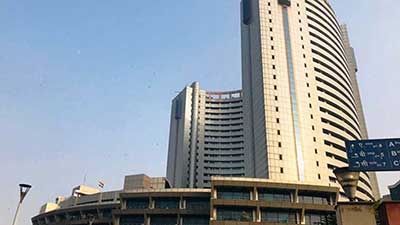Relevance: GS-2: Statutory, regulatory and various quasi-judicial bodies.
Key Phrases: Delhi Municipal Corporation, Lok Sabha, municipal corporation , Balakrishnan Committee, Bureaucratic congestion, Adminstrative Overheads.
Context:
- Recently the Union Cabinet gave its consent to a bill seeking the merger of the North Delhi Municipal Corporation, South Delhi Municipal Corporation, and East Delhi Municipal Corporation to create a single, unified municipal corporation for the megacity—the Municipal Corporation of Delhi.
Do you Know?
- A municipal corporation is a type of local government in India that administers urban areas with a population of more than one million.
- The 74th Amendment Act defined the formations of urban local governments and their activities.
- The Twelfth Schedule of the Constitution lists the subjects that municipal corporations are responsible for.
- The first such Municipal Corporation was set-up in the former Presidency Town of Madras in 1688.
Key Highlights:
- The merger marks a return to the situation that prevailed before the trifurcation in 2011 when the Delhi Municipal Corporation combined the physical jurisdictions of the three cited municipal bodies.
- The new Act undoes the division brought about by the Delhi Municipal Corporation (Amendment) Act, 2011.
- In the interim, the Central government would have to appoint a special officer to carry on the affairs of the combined Municipal Corporation of Delhi.
- The 2022 Act seeks to-
- Unify the three municipal corporations into a single, integrated, well-equipped entity.
- Ensure a robust mechanism for synergised and strategic planning and optimal utilisation of resources.
- Bring about greater transparency, improved governance, and more efficient delivery of civic services for the people of Delhi.
What led to the trifurcation of the Delhi Municipal Corporation in 2012?
- The state of basic services in Delhi was constantly deteriorating.
- Recommendations by various committees: Several committees had looked at the problem and had advised that the monolithic Municipal Corporation of Delhi (MCD) may be abolished and replaced by several compact municipalities.
- The committees included the Balakrishnan Committee (1989), the Virendra Prakash Committee (2001), and the recommendations of the Group of Ministers (GOM). All of them were unanimously in favour of splitting up the MCD.
Arguments on the side of Trifurcation.
- Greater decentralisation: Smaller municipalities achieve greater decentralization, one of the key hallmarks of good governance.
- Larger voice for the citizens: There is also a larger voice for the citizens and greater accountability towards them. Citizens would find it easier to give input and impact decisions since the scene of decision-making is closer to them.
- Less Bureaucratic congestion: There is evidence that larger municipal bodies tend to suffer from ‘bureaucratic congestion’.
- Better delivery of civic services: Trifurcation would bring about better delivery of civic services.
Arguments on the side of Unification.
- Greater financial and technical ability: A larger municipal corporation commands greater financial and technical ability that are required to manage megacities, as well as to go out in the market to negotiate debt for infrastructure.
- Lower costs per unit: The principle of economies of scale is better served if a contiguous population is together in one unified entity. As a consequence, there are likely to be lower costs per unit.
- Reduction in Administrative Overheads: Administrative overheads are likely to get reduced, unlike in the case of multiple municipal bodies that need to have a complete set of administrative apparatus.
- Business as a single whole: In a very large city, populations are contiguous and citizens live and transact business as a single whole.
- Unified architecture and operation: Certain services are provided from sources that are common and there are aspects of a very large city that need a unified architecture and operation.
- Money is pooled into one kitty: Apart from planning, any financial investment required to be made in any major infrastructure would be better served if the money is pooled into one kitty.
How will the MCD’s finances be impacted by the unification?
- The combined budget deficit of the East and North MCDs exceeds Rs 2,000 crore.
- The South MCD was solvent until a couple of years ago, but it too has come under financial stress now — and has a budget deficit of Rs 500 crore.
- The total annual income of the three corporations from their own revenues is around Rs 6,700 crore, while the total annual salary and pension expenditure for their combined 1,60,000 employees amounts to Rs 8,900 crore.
- If the corporations are merged, the civic body would be able to save around Rs 200 crore by decreasing the number of officers and renting out some spaces that will be vacated.
Conclusion:
- While the megacity of Delhi is a fait accompli in terms of its demography, its governance architecture can always be tweaked through processes of democratic decentralisation, transparency, and accountability, thereby combining the advantages of size on the one hand and the benefits of local decision-making on the other.
- That initiative could still be taken and could set an example for other megacities to emulate.
Sources: ORFOLINE
Mains Question:
Q. The Union Cabinet gave its consent to a bill seeking the merger of Delhi’s municipal corporations. Critically examine its impact on the governance of Delhi. (250 words).









